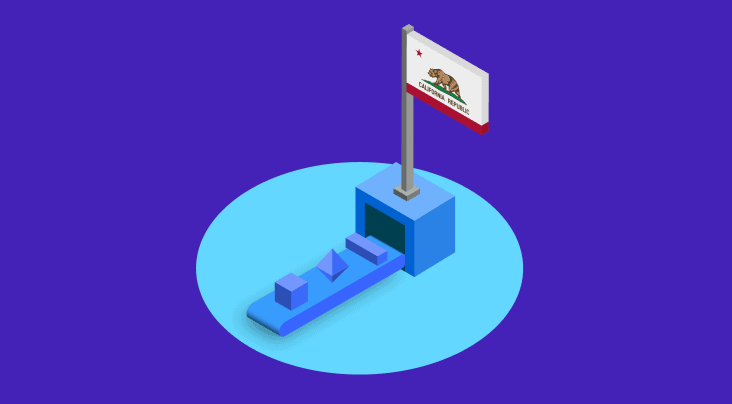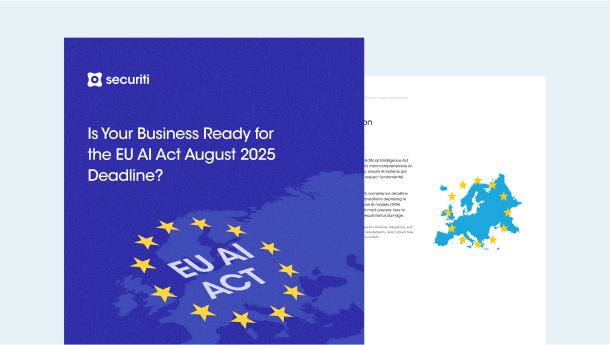Data is the new oil.
This shows how data has emerged as a valuable asset for organizations. If leveraged strategically, it can help organizations pinpoint what avenues are likely to yield the most promising results, which ventures do not hold value, which marketing strategy is likely to succeed, and which demographic to target, among several other benefits.
However, owing to just how valuable it is, organizations have a tremendous responsibility to manage this asset appropriately. Such responsibility is further exacerbated when the data in question is extremely sensitive, such as health-related data.
The Health Insurance Portability and Accountability Act (HIPAA) of 1996 is a federal law in the United States that requires all organizations handling such sensitive health data to undertake all necessary precautions and measures to protect this data.
HIPAA Data Governance is one such measure that organizations can deploy to ensure compliance. It refers to a structured framework and set of processes and policies that ensure the responsible and secure management of health-related data.
Read on to learn more about HIPAA data governance:
Who Needs to be HIPAA Compliant
HIPAA is applicable to both organizations and business associates.
Organizations
Individuals, organizations, and agencies that fall under the definition of a ‘covered entity’ must comply with the HIPAA requirements. Covered entities under HIPAA include three main categories:
1. Health Plans
These include individual or group plans that provide or pay the cost of medical care. The health plans may include the following:
- Health insurance companies.
- Health maintenance organizations.
- Employer-sponsored health plans.
- Government programs that pay for health care, like Medicare, Medicaid, and military and veterans’ health programs.
2. Healthcare providers
These individuals or entities who electronically transmit health information in connection with certain transactions. These transactions include claims, benefit eligibility inquiries, referral authorization requests, or other transactions for which HHS has established standards under the HIPAA Transactions Rule. The health care providers include but are not limited to doctors, psychologists, dentists, clinics, pharmacies, nursing homes, etc.
3. Health Care Clearinghouses
Healthcare clearinghouses are entities that process nonstandard information they receive from another entity into a standard format or data content, or vice versa. Healthcare clearinghouses may include billing services, repricing companies, community health management information systems, and value-added networks and switches if these entities perform clearinghouse functions.
Business Associates
HIPAA requirements also extend to the business associates of covered entities as well. A ‘business associate’ refers to an individual or entity that performs certain functions on behalf of a covered entity that entails the use or disclosure of protected health information (PHI).
HIPAA Violation Penalties
The covered entities are liable for civil as well as criminal penalties for committing violations of their obligations under the provisions of HIPAA. The details of both types of penalties are as below:
Civil Penalties
Based on the nature of the violation committed, the civil money penalties have been prescribed in the following different levels (updated as of October 2023):
Tier 1: Minimum of $137 to a maximum of $68,928 for each violation with an annual maximum fine of $2,067,813 where the covered entity did not know and, by exercising reasonable diligence, would not have known that it was in a violation;
Tier 2: Minimum of $1,379 to a maximum of $68,928 for each violation with an annual maximum fine of $2,067,813 where the violation was due to a reasonable cause and not due to willful neglect;
Tier 3: Minimum of $13,785 to a maximum of $68,928 for each violation with an annual maximum fine of $2,067,813 where the violation was due to willful neglect and was corrected within 30 days beginning from the day when the covered entity came to know of the violation or, by exercise of reasonable diligence, would have come to know about the occurrence of the violation; and
Tier 4: Minimum of $68,928 to a maximum of $2,067,813 for each violation with an annual maximum fine of $2,067,813 where the violation was due to willful neglect and was not corrected within 30 days beginning from the day when the covered entity came to know of the violation or, by exercise of reasonable diligence, would have come to know about the occurrence of the violation.
Criminal Penalties
The provisions of HIPAA also provide for criminal enforcement for the offense of unlawful collection, use, or disclosure of individually identifiable health information. Different levels of criminal penalties to be imposed depending upon the nature of the offense are as follows:
Tier 1: Fine amounting to a maximum of $50,000, imprisonment for not more than one year or both for knowingly obtaining or disclosing identifiable health information;
Tier 2: Fine amounting to a maximum of $100,000, imprisonment for not more than five (05) years or both if the offense is committed under false pretenses; or
Tier 3: Fine amounting to a maximum of $250,000, imprisonment for not more than ten (10) years, or both if the offense is committed with intent to sell, transfer, or use individually identifiable health information for commercial advantage, personal gain, or malicious harm.
Implementing HIPAA Data Governance
Knowing the importance of data governance in healthcare is an incredibly important foundation. It has to be built upon concrete steps that will be critical to the effectiveness of any such data governance framework.
Identify All Data
The most fundamental step in establishing a reliable and effective data governance framework is conducting a thorough and comprehensive audit of an organization’s data infrastructure.
Doing so will not only enable an organization to create a data hierarchy to understand the context around the sensitivity of data, permissions related to data, and the relevant risk to it but also lend insights into possible strategies going forward to amend any irregularities and mitigate any immediate threats.
Standard Compliance
The principal purpose of establishing a HIPAA data governance framework is to avoid any inconsistencies within an organization’s internal data practices, which may lead to possible violations and adversely impact its ability to protect PHI.
Employee Training
An organization may very well end up developing a highly effective data governance framework. However, such a framework will only yield equivalent results if the personnel expected to adopt the framework are thoroughly trained and knowledgeable about it.
Arranging routine employee training sessions and other seminars that explain how such frameworks can empower employees to perform their tasks securely and also highlight the consequences of inaction. By investing in comprehensive training, organizations can significantly enhance their chances of reaping the maximum benefits of data governance.
Take All Stakeholders Onboard
Once an organization has its internal practices and policies in order, it can move towards ensuring any and all third parties it deals with follow similar or equivalent protocols. Doing so not only decreases the chances of possible HIPAA violations but also increases the efficiency of the organization’s operational aspects if data practices can align along similar values.
Identify Roles & Responsibilities
Health-related data is already a highly sensitive area for organizations to charter. There should be no possibility of ambiguity within the organization related to how such data should be managed and, more importantly, who should be in charge of managing it.
Each role should be well-defined, outlining specific responsibilities concerning the data at hand. This ensures that access, modification, and sharing of such sensitive information are granted only to designated individuals with well-defined tasks and objectives.
Establish Data Access Controls
This is an extension of the roles and responsibilities being appropriately defined. With adequate data access controls, an organization can not only govern how each role accesses and behaves with data but also gain similar insights related to data access privileges given to applications and other tools. Data governance sets forth policies and procedures to manage access to PHI in accordance with the stipulations of the HIPAA Security Rule. This involves the deployment of role-based access controls to guarantee that only authorized persons can access sensitive patient data.
Data Retention and Disclosure Mechanism
Policies within data governance should cover the retention and disposal of data, guaranteeing that PHI is retained for the necessary duration and securely disposed of when deemed unnecessary. This aligns with HIPAA mandates for the appropriate management and disposal of sensitive patient information.
It additionally establishes protocols for sharing and revealing PHI to third parties, including business associates. These protocols must align with the minimum necessary standard outlined in the HIPAA Privacy Rule, ensuring that only the essential amount of PHI is disclosed for a specific purpose.
Data Security and Breach Notification
Organizations shall implement measures to safeguard PHI against unauthorized access, disclosure, or loss. This involves the utilization of encryption, secure storage solutions, and the implementation of data backup and recovery plans per the HIPAA Security Rule requirements.
Organizations shall also adopt measures in accordance with the HIPAA Breach Notification Rule, which requires covered entities to notify affected individuals and relevant authorities in the event of a breach involving PHI.
How Securiti Can Help
HIPAA data governance will be a critical concern for organizations intent on ensuring all users’ PHI is appropriately protected and the mechanisms in place to do so are capable of doing so. As elaborated above, HIPAA compliance is a process that takes diligence and deploying effective tools.
Here is where Securiti comes in.
Securiti is the pioneer of the Data Command Center, a centralized platform that enables the safe use of data and GenAI. It provides unified data intelligence, controls, and orchestration across hybrid multicloud environments. Additionally, Securiti has a plethora of other modules and solutions that are designed to ensure an organization can adequately address any of its data security, privacy, governance, and compliance obligations under any major regulation.
Solutions such as Vendor Risk Assessment and internal Assessment Automation enable organizations to put themselves on the path to HIPAA compliance more efficiently.
Request a demo today and learn more about how Securiti can help your organization's HIPAA compliance journey.
Frequently asked questions (FAQs) related to HIPAA Data Governance
Here are some other common questions you may have:









































